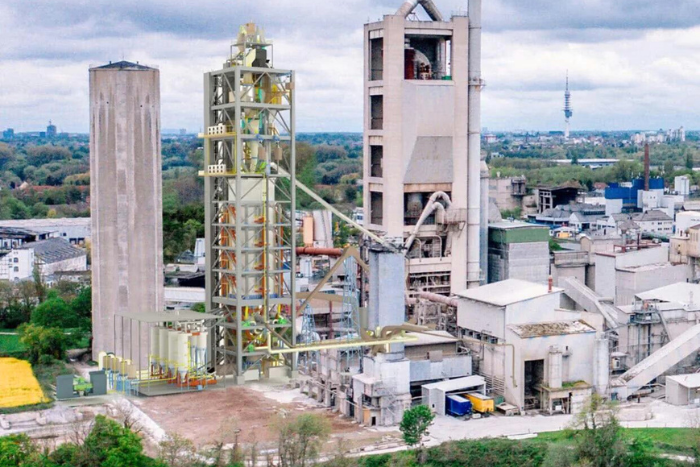Although CCS/CCUS technology may be useful to cut emissions in sectors that are difficult to decarbonise, relying on it may reduce Indonesia’s economic resilience
Indonesia recently issued a presidential regulation called “Implementation of Carbon Capture and Storage Activities” (No. 14/2024). Two things were considered while issuing this regulation, namely to support efforts to reduce carbon emissions and to reap the economic potential that could be obtained if Indonesia became a regional hub for carbon storage.
So where does the Indonesian government’s focus lie between these two poles?
The money factor
The application of carbon capture, utilisation, and storage (CCUS) technology has long been encouraged by the oil and gas industry in Indonesia. In their business landscape, the implementation of this technology aims to increase their production. However, with this new regulation, companies holding oil and gas field concessions in Indonesia can also expand their business to include the storing of carbon emissions produced by industries from other sectors in their empty reservoirs.
The Indonesian government sees this as a golden opportunity. On various occasions, it has stated that the issuance of this regulation would make Indonesia a major CCS/CCUS player in Southeast Asia. With the potential for carbon storage of up to 572 billion tonnes, the Indonesian government also said that a number of Asian countries are interested in collaborating on cross-border carbon storage agreements. Singapore is the first country to sign such an agreement with Indonesia.
The government is so optimistic that CCS/CCUS technology will help reduce emissions while increasing profits that it plans to quickly issue derivative regulations from this new regulation in July. Subsequently, in the latest draft of the National Energy Policy (KEN) revision, the Indonesian government targets that fossil energy-based power plants will continue to operate beyond 2035 by being fully equipped with CCS/CCUS.
The hidden risks
Not everything related to CCS/CCUS is ideal, as revealed in the “Reviewing the Feasibility of Carbon Capture Technology” report published by Yayasan Indonesia CERAH—a non-profit organisation working to advance the energy transition policy agenda in Indonesia. The most essential factor that the Indonesian government conceals is that CCS/CCUS is an expensive technology. Installing CCS/CCUS technology in coal-fired power plants, for example, will increase electricity generation costs by almost two-thirds compared to power plants that are not installed with CCS/CCUS.
Based on a case study of CCUS use at the Ultra-Supercritical coal-fired power plant in Blora, Central Java, it costs at least US$ 62.8/tonne CO2 to capture, transport, and store carbon emissions. Equipping all coal-fired power plants (CFPPs) in Indonesia with CCS/CCUS will incur additional costs of around US$11.6 billion a year. These additional costs will have a significant impact on CFPP electricity production costs and ultimately burden the state due to current subsidy schemes as well as potentially increasing the burden of the people if electricity prices are raised.
Not only that, the high cost of CCS/CCUS is not directly proportional to its effectiveness in capturing carbon. Referring to CERAH’s briefing note, CCS contributes the least in reducing emissions at the highest cost compared to other mitigation action options in the energy and industrial sectors. Research also finds that claims of up to 90% emissions reductions from CCS/CCUS are often unproven. For example, the Petra Nova CCS project in the United States only captured 33% of the carbon emissions from a 654-megawatt (MW) capacity plant.
Another risk that the Indonesian government seems to have forgotten is the threat to the availability of clean water from the implementation of CCS/CCUS technology. The results of the CERAH study reveal that installing CCS/CCUS at coal-fired power plants will nearly double water use compared to ordinary power plants. The problem is that not all coal-fired power plants are located on the coast. Some of them are located on land and use river water or groundwater. Assuming that the coal-fired power plants owned by state electricity company PT PLN (Persero) will use CCS/CCUS, the water requirement is estimated to reach 357 billion litres or equivalent to 22 times Jakarta’s clean water requirement.
Moreover, the risk of leaks also haunts this technology. CCS/CCUS technology requires the presence of impermeable underground cavities. However, there is always a risk that these captured emissions could leak to its surrounding areas. One of the most dangerous impacts is a decrease of pH in groundwater due to CO2 contamination—making it unfit for consumption. So far, no process can ensure that the CO2 storage process will be safe from leaks or that these captured emissions will be safely stored underground forever.
Although CCS/CCUS technology may be useful to cut emissions in sectors that are difficult to decarbonise, relying on it may reduce Indonesia’s economic resilience. Increased fossil-fuel dependence due to CCS/CCUS will render the country’s economy more vulnerable to fossil fuel price volatility. This increased vulnerability clearly benefits certain parties more than others. This is why the Indonesian oil and gas sector was the most enthusiastic in welcoming the new regulation, calling it a “new business opportunity” for the future.
The way forward
Considering these various risks, the Indonesian government should more seriously review their CCS/CCUS aspirations. Early retirement of coal-fired power plants and building as much renewable energy as possible remains the cheaper and most effective option to cut emissions compared to CCS/CCUS. The Indonesian government needs to choose the cheapest and safest mitigation action for the sake of environmental as well as societal sustainability.
Retno Ayuningtyas is a Green Energy and Economy Associate at Yayasan Indonesia CERAH. Yayasan Indonesia Cerah also known as CERAH is an Indonesian non-profit organisation working to advance the energy transition policy agenda in Indonesia. The views expressed are personal.

